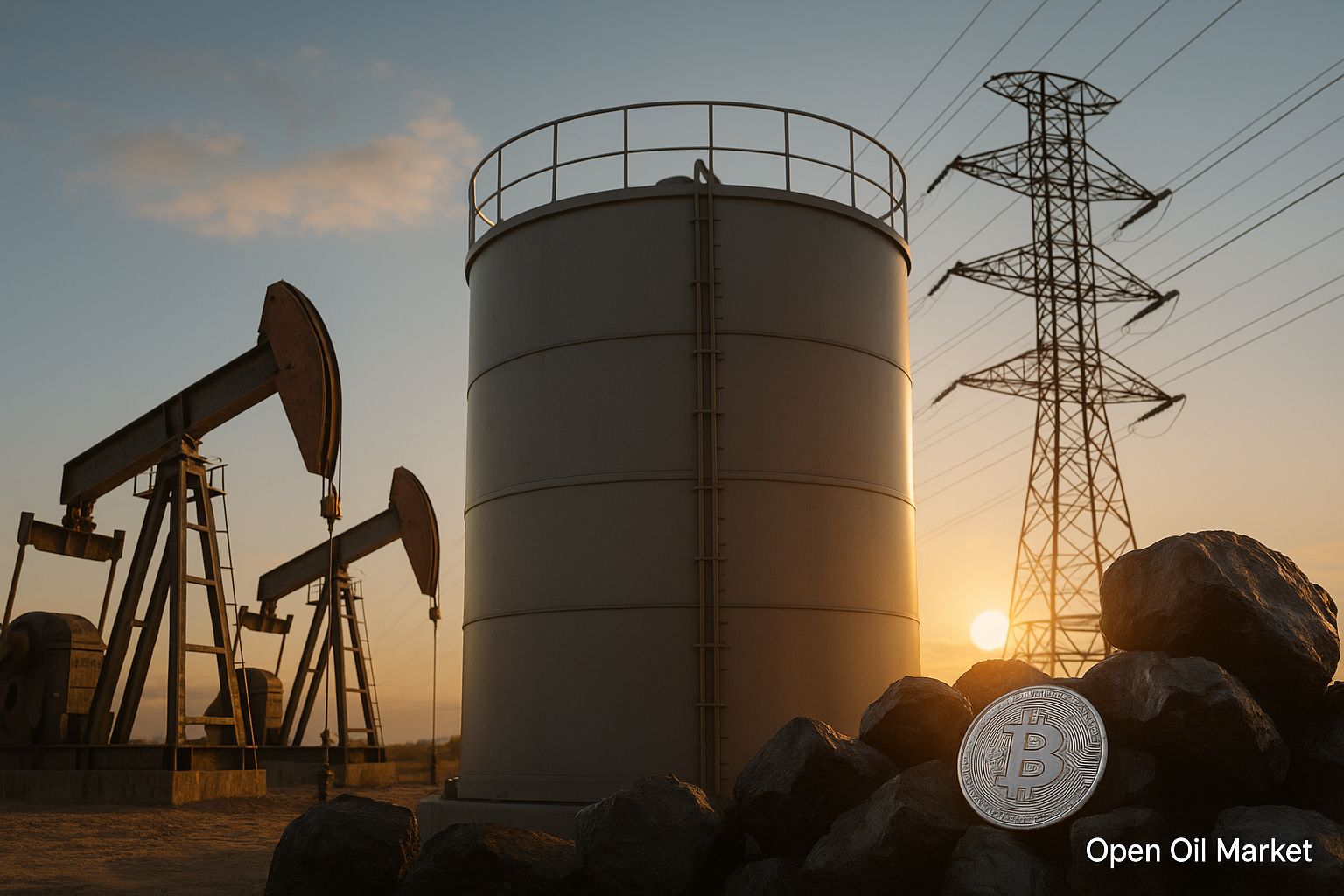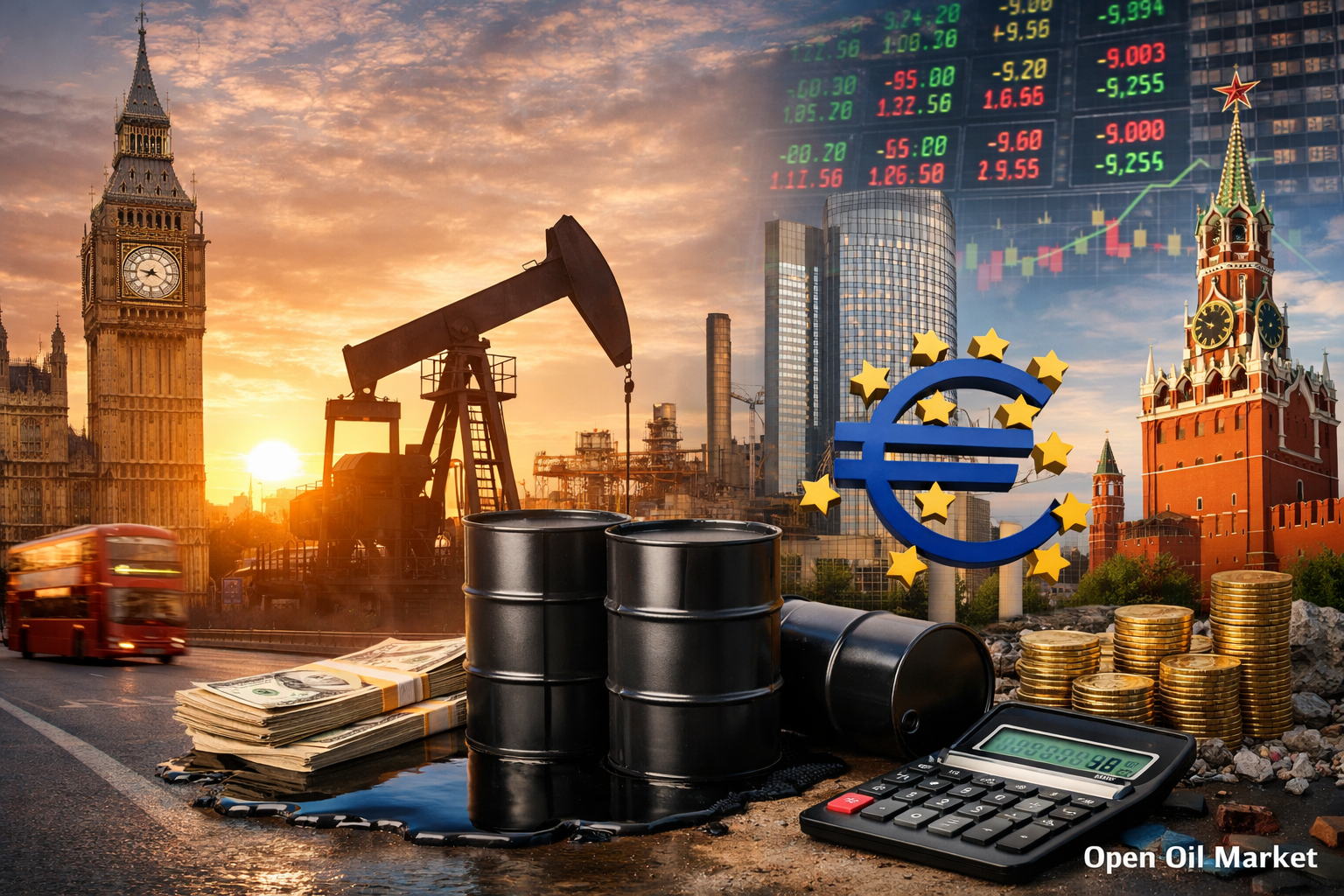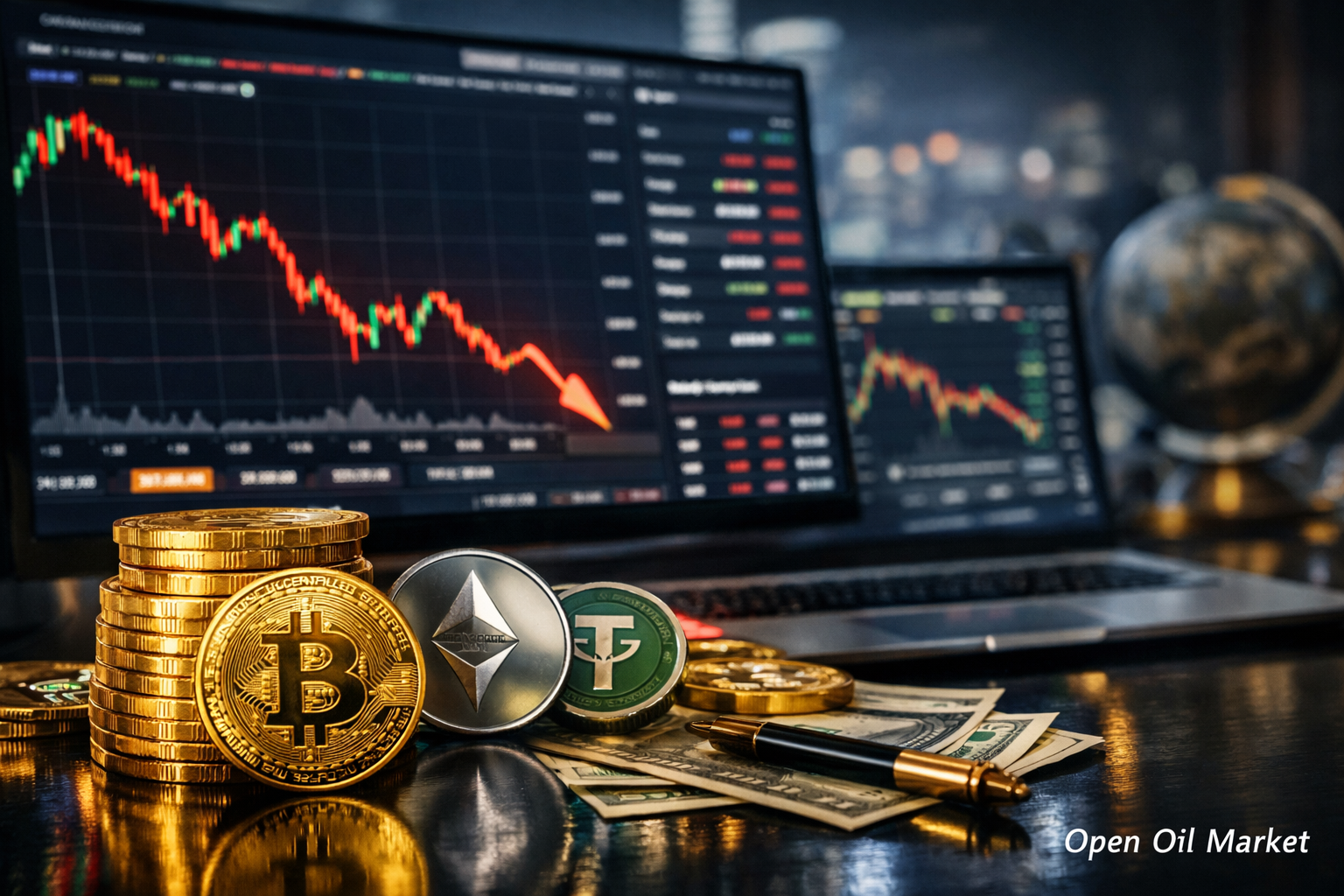
Key Energy Sector News as of October 31, 2025: US-China Trade Truce Supports Oil Prices, Record Gas Supplies in Europe Ensure Stability, and the Russian Fuel Market Recovers from the Crisis. Analysis of Key Events and Prospects for Investors.
As of October 31, 2025, developments in the fuel and energy complex (FEC) occur amidst persistent geopolitical tensions, but positive signals are emerging in the markets. The sanction standoff between Russia and the West shows no signs of abating: the United States has recently imposed strict restrictions on Russia’s largest oil and gas companies, while the European Union closes the remaining loopholes for sanction evasion. Nevertheless, the global economy received a boost of optimism – during a meeting on October 30, the leaders of the US and China agreed on a trade truce, avoiding a new round of tariff wars. The prospects for easing relations between the two largest economies have improved forecasts for global energy demand and bolstered sentiment in the commodity markets.
Meanwhile, the commodity markets are exhibiting relative stability. Oil prices, which had dropped to multi-month lows earlier in the fall, are maintaining a moderate range: Brent oil is trading around $65 per barrel, and WTI is about $61. Recent sanction-related news caused volatility in quotes (Brent briefly rose above $66), but overall, the balance of supply and demand remains fragile, leaning toward surplus. The European gas market confidently enters winter with record fuel reserves: EU underground storage facilities are over 95% full, driving gas prices down to a comfortable ~30€ per MWh (significantly lower than the peaks of 2022). The global energy transition is gaining momentum – investment in renewable energy is hitting records, and the share of renewable energy sources in electricity generation is continuously growing, although countries still rely on traditional resources to ensure base load. In Russia, emergency measures to stabilize the domestic fuel market are yielding results: gasoline and diesel production have been restored, wholesale prices have decreased from peak levels, and fuel supply at gas stations has been ensured. Below is a detailed overview of key segments of the oil, gas, coal, and energy markets as of the current date.
Oil Market: Surplus Balance and Risks Amid Trade Truce
Global oil prices remain under pressure from fundamental factors, despite short-term spikes. Following an autumn drop to multi-month lows, Brent prices have stabilized in the range of ~$60–65 per barrel, which is significantly lower than the beginning of the year. The market appears to be operating under a scenario where oil supply will exceed demand by the end of 2025. Several trends contribute to this:
- Increase in production amid slowing demand. OPEC+ countries will continue to gradually increase oil production: in October, the collective quota was raised by approximately 0.14 million barrels per day, and a similar step is expected in November. Simultaneously, major non-cartel producers – primarily the US and Brazil – are producing record volumes of oil. However, global consumption growth is slowing. According to the International Energy Agency (IEA), oil demand is expected to increase by only ~0.7 million barrels per day in 2025 (compared to a growth of over 2 million in 2023). The world economy is growing moderately, past price peaks have stimulated energy conservation, and the accelerated adoption of electric vehicles is reducing fuel consumption growth. Earlier in 2025, the escalation of trade disputes between the US and China also constrained demand; however, the recent trade agreement between Washington and Beijing improves forecasts and alleviates some uncertainty.
- Geopolitical and sanction risks. The tightening of sanctions against the Russian oil sector sustains uncertainty in the oil market. The US has effectively banned cooperation with key Russian oil companies, sanctioning companies such as Rosneft and Lukoil. The EU and the UK are closing off avenues for trading Russian energy resources (including banning the re-export of oil products sourced from Russian crude through third countries). A full international embargo on Russian oil is also under discussion. At the same time, military risks persist: in recent months, there has been an increase in drone attacks on oil infrastructure in Russia, leading to temporary shutdowns of some refineries and a reduction in production. Additionally, political pressure on major importers of Russian raw materials is starting to have an effect: for instance, under the influence of Western partners, India has stated its readiness to gradually reduce its purchases of Russian oil in the future, although it cannot immediately abandon it. Any sharp export restrictions from Russia – whether due to sanctions or force majeure – could reduce global supply and cause prices to spike.
Thus, the oil market currently balances between oversupply and geopolitical risks. The excess of production over demand limits significant price increases; however, sanction shocks and potential shifts in flows (such as reduced Indian imports) prevent prices from dropping significantly below current levels. Many analysts expect that in the absence of new shocks in the coming months, oil will trade relatively cheaply – around $60 per barrel – which is favorable for consumers. At the same time, producers and investors remain cautious, considering the potential for sudden market changes.
Gas Market: Record Supplies in Europe and Redirected Flows
The gas market presents a situation favorable to consumers, especially in Europe. The continent is entering the winter with unprecedented gas reserves: EU underground storage facilities are over 95% full, which is 5–7% higher than last year's level. A mild autumn and active LNG imports allowed for these reserves to build up without any rush, stabilizing wholesale gas prices at low levels. Futures at the TTF hub are holding around 30–35€ per MWh – significantly lower than the peak values of 2022. The likelihood of a recurrence of last year's price crisis has diminished substantially, although much will depend on how cold the winter turns out to be and whether there are any disruptions in LNG supplies.
- Europe is ready for winter. Record gas reserves in the EU create a strong buffer in case of prolonged cold spells. Demand for natural gas in the region remains subdued: the economic growth in the EU is low, and the high output of electricity from renewable sources (RES) during autumn has reduced the load on gas-fired power stations. Even in extreme cold, significant portions of additional consumption can be covered by reserves, which considerably reduces the risk of shortages.
- Record LNG imports. To compensate for the reduction in pipeline supplies from Russia, European countries have ramped up their purchases of liquefied natural gas. Weaker demand for LNG in Asia this autumn has freed up additional volumes for Europe. The largest suppliers – the US, Qatar, Australia, and others – are operating at the limit of export capacity, redirecting fuel to the European market. LNG imports have almost completely offset the lost volumes of Russian pipeline gas and even cover the decline in production from fields in the North Sea. The high influx of LNG helps keep the market balanced and prevents sharp price fluctuations.
- Russia's "Eastern Turn." Having lost a significant portion of the European market, Russia is actively redirecting its gas exports to the East. Supplies via the Power of Siberia gas pipeline to China reached record levels in 2025 (close to its design capacity of ~22 billion cubic meters per year). Moscow is also promoting new projects: preparations for the construction of the Power of Siberia-2 pipeline through Mongolia, which by the end of the decade will partially replace lost European demand, are underway. Moreover, additional liquefaction capacities in Yamal and Sakhalin have been implemented, with new batches of Russian LNG being sent to China, India, and other Asian countries. Although the total gas export from Russia is still below pre-sanction levels, the eastern markets and prioritization of domestic supply are allowing the industry to adapt to new realities.
Overall, the global gas sector is entering the winter with a solid safety margin. Europe's unprecedented reserves and the flexibility in redistributing global gas flows bode well for price stability in the coming months. Unless extreme cold weather or other unforeseen circumstances occur, gas prices are expected to remain at a comfortable level for consumers, and the market will remain balanced. Nevertheless, market participants continue to monitor weather risks and competition for LNG from Asia, aware that the situation can change.
International Politics: Sanction Standoff and Restructuring Energy Flows
The end of October is marked by further intensification of sanctions pressure on the Russian FEC and a lack of progress in dialogue. The US has expanded sanctions, effectively blocking cooperation with Russia's largest oil and gas companies and targeting carriers of Russian raw materials (the so-called "shadow fleet" of tankers). The European Union, in turn, is tightening restrictions: new bans on circumvention schemes for oil and oil product trade through third countries have been introduced, and a plan for a complete ban on imports of Russian pipeline gas by 2026 has been approved. Moscow sharply condemned the new restrictions and announced its intention to protect its interests: Russian authorities promise to redirect energy exports to friendly countries and are prepared to take retaliatory measures if necessary.
Meanwhile, the political dialogue between Russia and the West remains at a stalemate. Following a symbolic meeting between the leaders of Russia and the US in the summer in Alaska, no substantial shifts have occurred. Washington has indicated that it does not intend to ease sanctions without resolving the geopolitical conflict, while Moscow refuses to change its position under pressure. In the West, discussions about new, even more radical sanctions measures are ongoing. Thus, the sanction standoff continues to define the external conditions for the sector's operations, creating heightened geopolitical risks for global energy markets and forcing countries to restructure their trade chains.
Asia: India and China Maintain High Imports and Increase Domestic Production
Asian countries continue to play a key role in global energy markets, remaining the largest consumers of oil and gas. **India** has made it clear that it cannot sharply cut Russian oil and gas purchases without jeopardizing its energy security. Despite external pressure, New Delhi continues to actively import fuel from Russia: Russian Urals oil is being sold to India at significant discounts to Brent prices, making such purchases economically advantageous. In 2025, Indian imports of oil, oil products, and coal from Russia remain close to record levels. Simultaneously, India aims to reduce its dependence on external supplies in the future by investing in the exploration and development of domestic fields and expanding infrastructure to handle diverse imports (for instance, LNG terminals).
**China** has also increased purchases of relatively cheap Russian raw materials, capitalizing on the situation. Beijing has not joined Western sanctions and imports large volumes of Russian oil and gas, although the growth rates of these supplies have slowed due to a high base from last year. By the end of 2025, China is estimated to cover about 70% of its oil needs and up to 40% of its natural gas needs through imports – these figures are among the highest in history, despite a gradual increase in its own production (a few percent per year). Chinese national companies are investing in increasing domestic oil and gas extraction and developing alternative energy sources, but in the foreseeable future, the country will remain heavily reliant on external supplies. Thus, India and China continue to be the largest drivers of energy demand, while also attempting to strengthen their resource bases to better balance their energy security.
Energy Transition: Record Investments in Renewable Energy with Continued Importance of Traditional Energy
The global shift to clean energy is accelerating in 2025. Many countries are introducing new capacities in solar and wind generation, setting records for electricity generation from renewable energy sources. Preliminary data indicates that in 2025, the total electricity generation by wind and solar stations globally will for the first time exceed that of coal-fired power plants. Investments in renewable energy are reaching historic highs: government incentive programs and "green" funds have provided a flow of hundreds of billions of dollars into the development of wind and solar parks, grid infrastructure, and energy storage systems. The share of renewable sources is steadily increasing in the global energy balance.
At the same time, traditional fuels still play a crucial role in meeting demand. Despite the rapid progress of renewable energy, oil, gas, and coal continue to provide the lion's share of global energy, especially for industry and transportation. In many regions, the stability of energy systems is maintained by gas and coal-fired power plants, which safeguard the grid during variable output from solar and wind stations. Governments and companies are increasingly investing in energy storage technologies, "clean" hydrogen, and other solutions to mitigate the variability of renewables. However, the transition to a carbon-neutral economy remains a long-term challenge: in the coming years, the world must balance the growth of clean generation with ensuring reliable energy supply by modernizing traditional infrastructure.
Coal Market: High Demand in Asia and Gradual Phase-Out of Coal in the West
The global coal industry in 2025 is demonstrating mixed trends. In Asia, there is sustained high demand for coal, while developed countries are accelerating their phase-out of this type of fuel as part of an ecological agenda. Last summer, Eastern Asia saw a surge in consumption: heat and peak loads led to increased coal generation. For example, in August, the total coal imports by China, Japan, and South Korea were nearly 20% higher than in July. This temporarily boosted Newcastle coal prices (Australia) above $110 per ton – the highest in the past five months. Major exporters – Indonesia, Australia, Russia, and South Africa – reacted to the high Asian demand by increasing production and shipments, allowing prices to return to a stable range in the autumn.
Concurrently, outside of Asia, there continues a systematic reduction in the role of coal. In the European Union, the share of coal generation has fallen below 10% (compared to ~15% a few years ago), with 11 EU countries officially announcing a complete shutdown of coal-fired power plants by 2030, betting on gas and renewable energy. In the US, cheap natural gas and the rapid growth of renewable energy are pushing coal out of the power sector, despite some support programs for coal producers. Even countries historically dependent on coal are cutting usage: Germany, which had increased coal-burning in 2022–2023 due to the gas crisis, reduced generation at coal plants again in 2025. As a result, global coal prices are significantly lower compared to previous year levels: data from the first half of 2025 show that export prices have plummeted by 25–30% compared to the same period in 2024, reflecting weakened demand outside Asia.
For Russia, one of the top three coal exporters, the current trends present both opportunities and risks. After the EU embargo in 2022, Russian companies redirected shipments from Europe to the Asia-Pacific region: now over 75% of Russian coal exports go to China, India, Turkey, and other countries in the region. Eastern markets largely compensate for the loss of European ones, but trading at long distances requires offering discounts and increases transport costs. In the face of a global shift away from coal, Russian coal producers will need to adapt to declining demand – looking for new buyers, developing deep coal processing, or switching to domestic projects (such as "clean coal" for energy and industry). The resilience of the coal business will depend on flexibility and efficiency; profitability in Asian markets may still be achievable for several more years, but new large-scale projects are associated with the risk of losing sales by 2030–2040. Coal industry companies and investors are already focusing on diversification, controlling costs, and collaborating with the government to mitigate the socio-economic impacts of the contraction in the coal sector.
Russian Fuel Market: Price Stabilization and Stringent Supply Control
In the autumn of 2025, the situation in the domestic market for oil products in Russia has significantly improved compared to the tense late summer. Following acute gasoline shortages in several regions and price surges in September, authorities promptly implemented a set of measures that began yielding results by mid-October. Wholesale prices for gasoline and diesel have retreated from record peaks, independent gas stations have resumed normal operations, and most regions are now fully supplied with fuel again. However, to prevent a new round of crisis, the government maintains strict control and extends the stabilizing measures:
- Export Limitation. The complete ban on the export of automotive gasoline introduced at the end of September has been extended until December 31, 2025. Restrictions on the export of diesel fuel also remain in place: independent traders are still prohibited from exporting diesel, and oil companies with large refineries are only allowed strictly limited exports under the supervision of government authorities.
- Support for Refining. The government has retained the "damping" mechanism and direct subsidies for oil refineries, paying subsidies for fuel supplies to the domestic market. This encourages companies to redirect gasoline and diesel to gas stations within the country despite the lost profits from exporting. Authorities have also recommended postponing non-critical repairs and increasing oil processing to ramp up fuel production for the winter season.
- Import and Price Monitoring. To eliminate shortages, the government has simplified the process for bringing in resources from abroad: import duties on gasoline and diesel have been reduced to zero until mid-2026, allowing for the import of fuel from neighboring countries (for example, from Belarusian refineries) if necessary. At the same time, price monitoring at gas stations has been intensified: the Federal Antimonopoly Service has issued warnings to major gas station networks for attempts to unjustifiably raise retail prices. The cabinet of ministers is trying to avoid direct administrative price freezes, preferring to rely on market mechanisms and targeted support measures – for instance, subsidizing fuel transportation to remote regions.
The set of measures is already yielding results. The daily output of gasoline and diesel in the country returned to pre-crisis levels by the end of October – helped by the completion of unplanned repairs at several refineries and redirecting some export volumes to the domestic market. Gas stations in most regions of the Russian Federation are now being continuously supplied with fuel again. The government hopes to get through the upcoming winter without serious disruptions, but maintains a state of heightened readiness – at the first signs of a new shortage, additional steps, including a return to bans, will follow. In the strategic perspective, the sector faces the challenge of modernization: there is a need to expand storage and delivery infrastructure, implement digital resource distribution systems, and increase the depth of oil processing domestically. These issues were actively discussed at the October "Russian Energy Week 2025" forum. It is clear that for the long-term stability of the fuel market, emergency measures alone are insufficient – a comprehensive transformation and investment in the proactive development of the refining sector is necessary.
Forecasts and Prospects: Cautious Optimism Ahead of Winter
The global energy sector is approaching the end of 2025 in a state of active adaptation to new realities. The ongoing confrontation between Russia and Western countries has radically changed global energy resource flows: Europe has effectively abandoned Russian gas and sharply reduced oil imports from Russia, while Russia has redirected exports to eastern markets and is strengthening energy cooperation with Asia. Simultaneously, fundamental factors are creating a relatively favorable climate for consumers. Oil and gas supply confidently meets demand, creating a safety margin – storage facilities are full, production levels are high, and demand is growing slowly. As a result, energy prices have stabilized at moderate levels compared to the turbulent peaks of previous years.
The cautiously optimistic winter scenario anticipates the absence of severe shocks. If the upcoming months pass without extreme cold or new geopolitical crises, global oil and gas markets will maintain equilibrium: a surplus oil market will keep prices low, and record gas reserves will prevent prices from soaring even with rising demand. For investors and industry participants, this implies a more predictable environment in which to plan operations, though profit margins are lower than during the years of super-high prices. However, risks have not disappeared. Any escalation of conflict, sudden sanctions, or technological incidents could quickly change the situation and reintroduce volatility into the markets. Additionally, the long-term trend of energy transition remains a focus: as RES capacities increase and climate policies tighten, the demand for fossil fuels will slow down, and FEC companies must prepare for new structural changes.
Overall, the fuel and energy complex is entering 2026 with cautious optimism. Short-term threats – from fuel crises in specific countries to gas shortages – are largely under control due to coordinated efforts from governments and businesses. Meanwhile, the sector is actively adapting to new trade routes, seeking growth opportunities under sanctions, and investing in technological development. The resilience of energy markets will depend on the ability of all participants to remain flexible and respond to challenges – whether due to market surpluses or political upheavals. For investors, it is crucial to maintain a balance between capitalizing on the current climate (low resource prices stimulating demand) and taking strategic actions in anticipation of the inevitable changes ahead.




